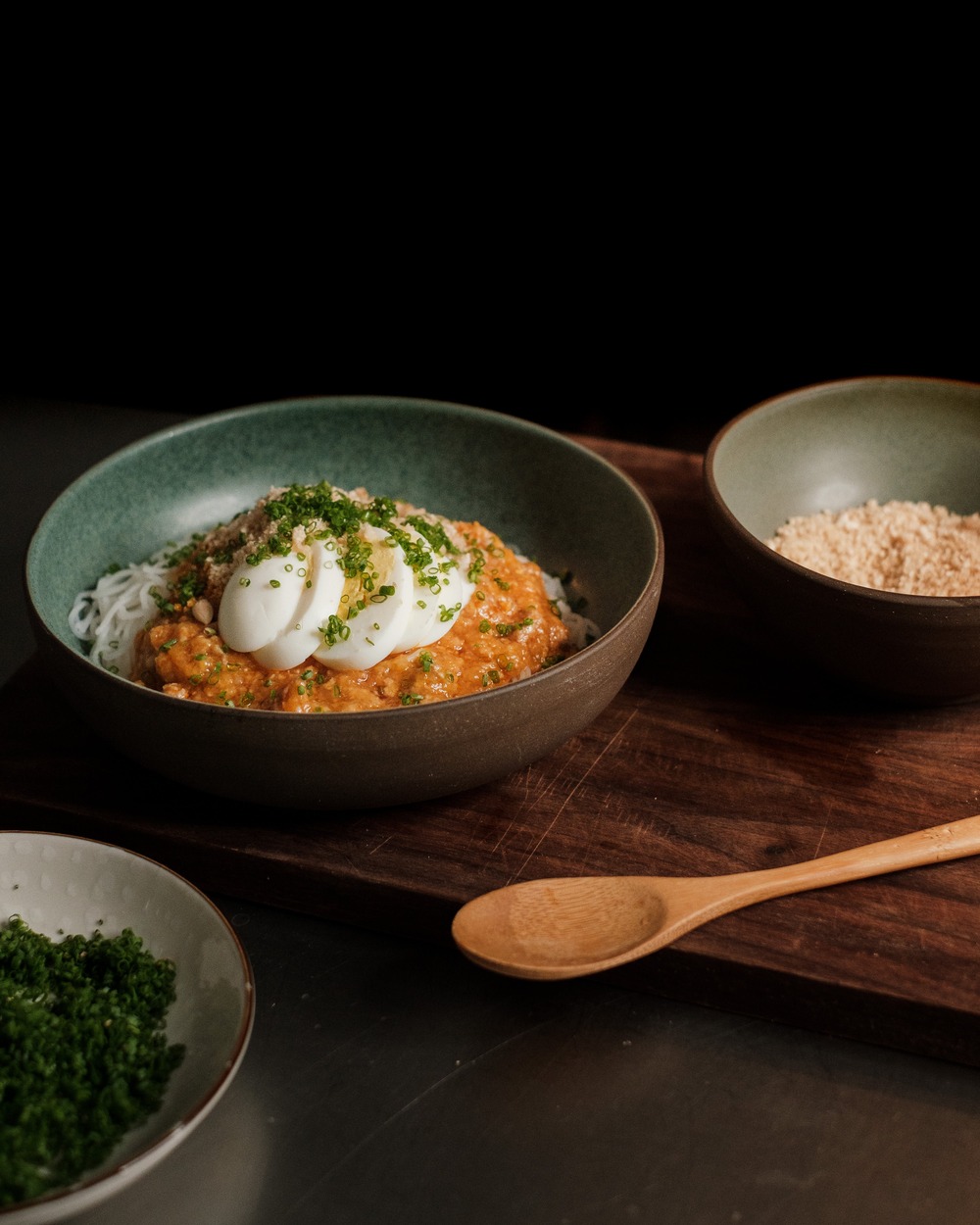Exploring the Rich Flavors of Filipino Cuisine: 20 Must-Try Dishes and 5 Delectable Desserts
While traveling, one of the most immersive ways to experience a new culture is through its cuisine. The Philippines, with its diverse cultural influences and abundant natural resources, offers a culinary landscape as vibrant and varied as the archipelago itself. Exploring local dishes becomes an integral part of your journey, allowing you to savor the unique blend of Spanish, Chinese, and indigenous flavors, as well as the sweet treats that showcase the richness of local ingredients. In this blog, we’ll be your guide, highlighting 20 must-try Filipino dishes and 5 delectable desserts that are sure to leave you craving for more. Get ready to embark on a flavorful adventure through the heart of Filipino gastronomy.
Savory Delights:
1. Adobo: A Flavorful Classic
No exploration of Filipino cuisine is complete without mentioning Adobo. This savory dish is a staple in Filipino households, featuring marinated meat (usually pork or chicken) in a rich blend of soy sauce, vinegar, garlic, and various spices. The slow-cooking process allows the flavors to meld, resulting in a mouthwatering masterpiece.

2. Sinigang: A Tangy Tamarind Soup
Sinigang is a comfort food that warms the soul. This sour tamarind-based soup often includes a variety of meats such as pork, beef, or shrimp, combined with an assortment of vegetables like water spinach, radishes, and eggplant. The distinct sourness, coupled with the medley of ingredients, creates a harmonious and satisfying dish.
3. Lechon: The King of Roasts
Lechon is the undisputed king of Filipino roasts. Whole pigs are slowly roasted over an open flame until the skin becomes incredibly crispy, while the meat remains tender and flavorful. This dish takes center stage during celebrations and special occasions, showcasing the artistry and skill involved in its preparation.
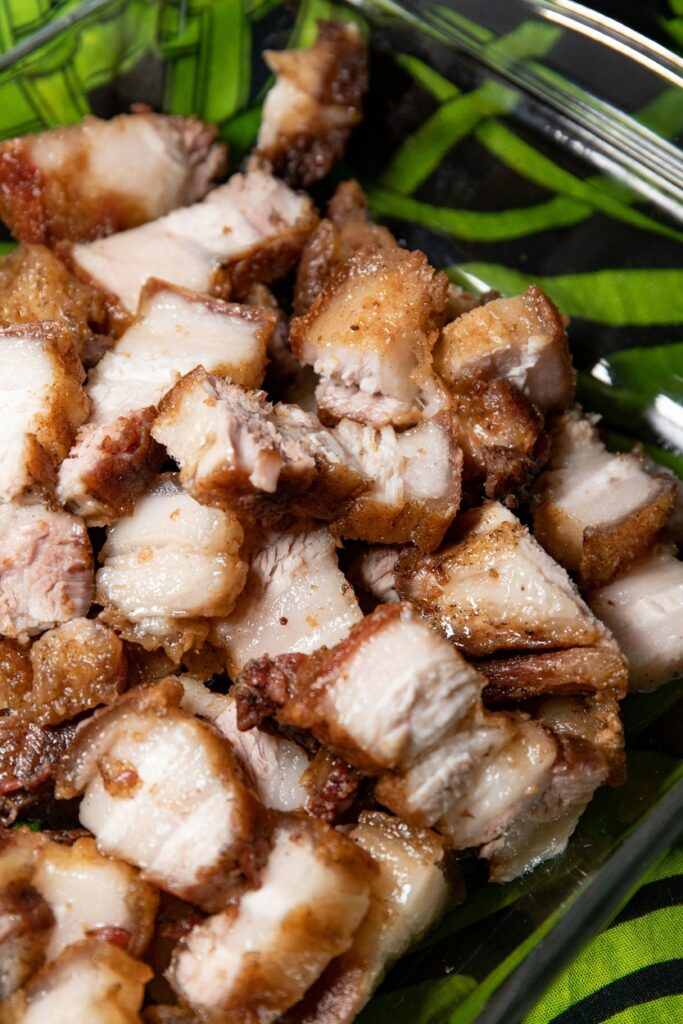
4. Kare-Kare: Peanut Butter Infused Delight
Kare-Kare is a savory stew made with oxtail, tripes, and vegetables, primarily flavored with a peanut sauce. The combination of earthy peanut butter, annatto, and a touch of shrimp paste creates a uniquely Filipino taste. It’s often served with bagoong (fermented shrimp paste) on the side, adding an extra layer of complexity to the dish.
5. Pancit Canton: Stir-Fried Noodle Perfection
Pancit Canton is a stir-fried noodle dish that showcases the Filipino love for noodles. With a mix of meat, vegetables, and soy sauce-infused noodles, it’s a flavorful and satisfying dish often enjoyed during birthdays, symbolizing long life and good luck.
6. Bistek Tagalog: Filipino Beef Steak
Bistek Tagalog is a Filipino beef steak dish featuring thinly sliced beef marinated in soy sauce, calamansi (Filipino lime), and garlic. The meat is then pan-fried and simmered in the marinade, creating a deliciously savory and slightly tangy flavor profile.
7. Laing: A Spicy Coconut Delight
Originating from the Bicol region, Laing is a spicy dish made with dried taro leaves, coconut milk, and chili peppers. The slow cooking process allows the flavors to meld, resulting in a rich and spicy coconut-infused dish that is a true representation of regional Filipino cuisine.
8. Tinola: A Ginger-Infused Chicken Soup
Tinola is a clear chicken soup flavored with ginger and fish sauce. This light and refreshing dish feature chicken, green papaya, and chili leaves, creating a soup that is both comforting and invigorating.
9. Dinuguan: A Blood Stew with a Twist
Dinuguan is a unique and flavorful dish made with pork offal, often including pig’s blood, vinegar, and spices. Despite its unconventional ingredients, the result is a savory and satisfying stew that pairs well with rice or puto (steamed rice cakes).
10. Balut: A Culinary Adventure
For the adventurous foodie, Balut is a must-try Filipino street food. It’s a fertilized duck egg with a partially developed embryo inside. While it might sound intimidating, Balut is enjoyed with a dash of salt and sometimes vinegar, creating a unique texture and taste experience.
11. Pancit Palabok: A Noodle Extravaganza
Pancit Palabok is a festive noodle dish that features rice noodles smothered in a flavorful shrimp sauce, often garnished with hard-boiled eggs, chicharrón (crispy pork skin), green onions, and a sprinkle of calamansi juice. This dish is a celebration of textures and flavors, making it a favorite during special occasions and gatherings.
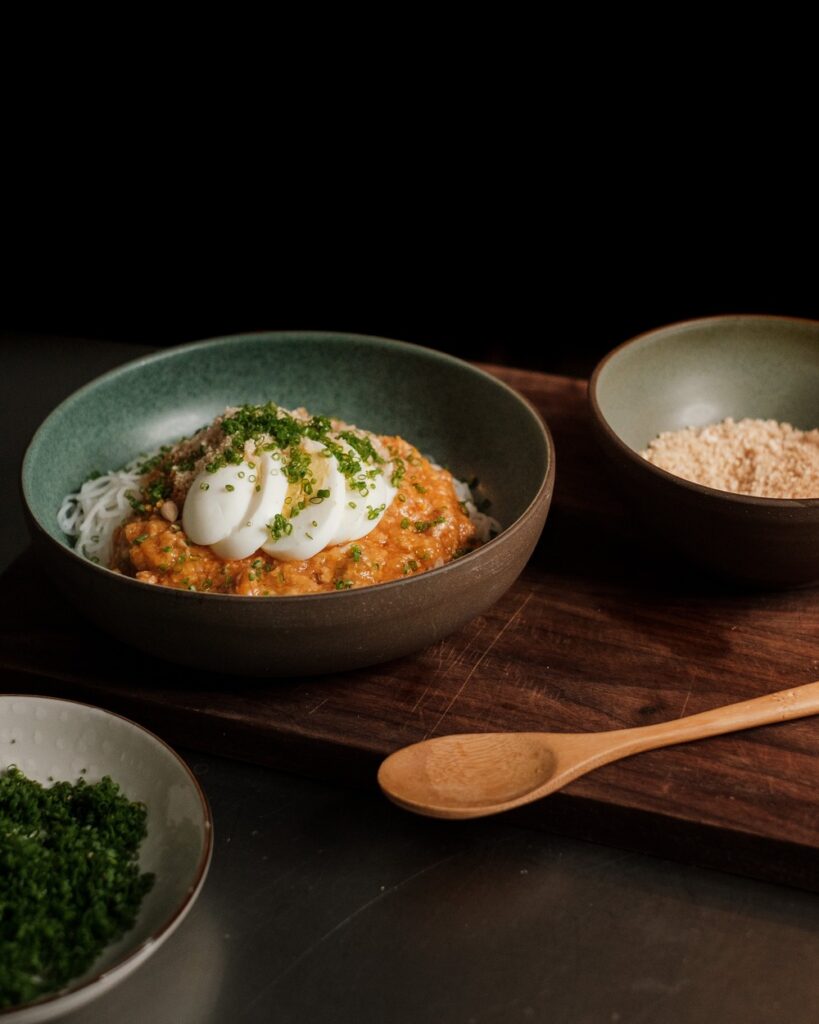
12. Lumpia: Filipino Spring Rolls
Lumpia, or spring rolls, are a Filipino favorite that come in various forms. Whether filled with savory meat mixtures or sweetened with banana and jackfruit, these crispy delights are a staple at Filipino gatherings. Served with a sweet and tangy dipping sauce, Lumpia is a crowd-pleaser that showcases the country’s culinary diversity.
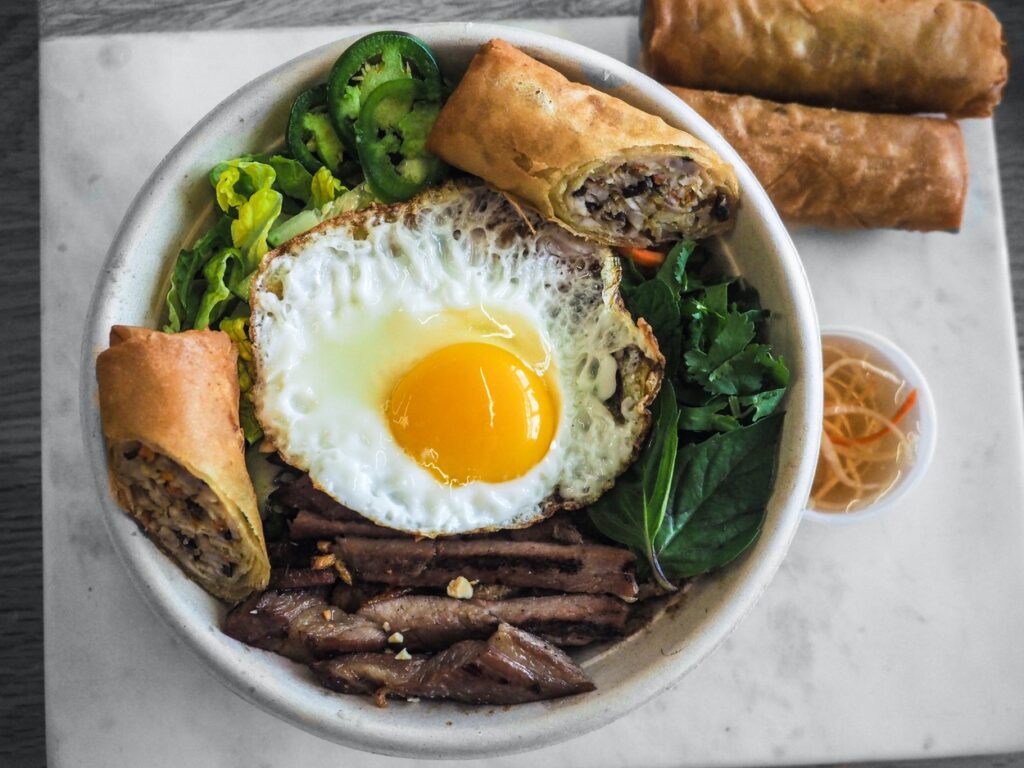
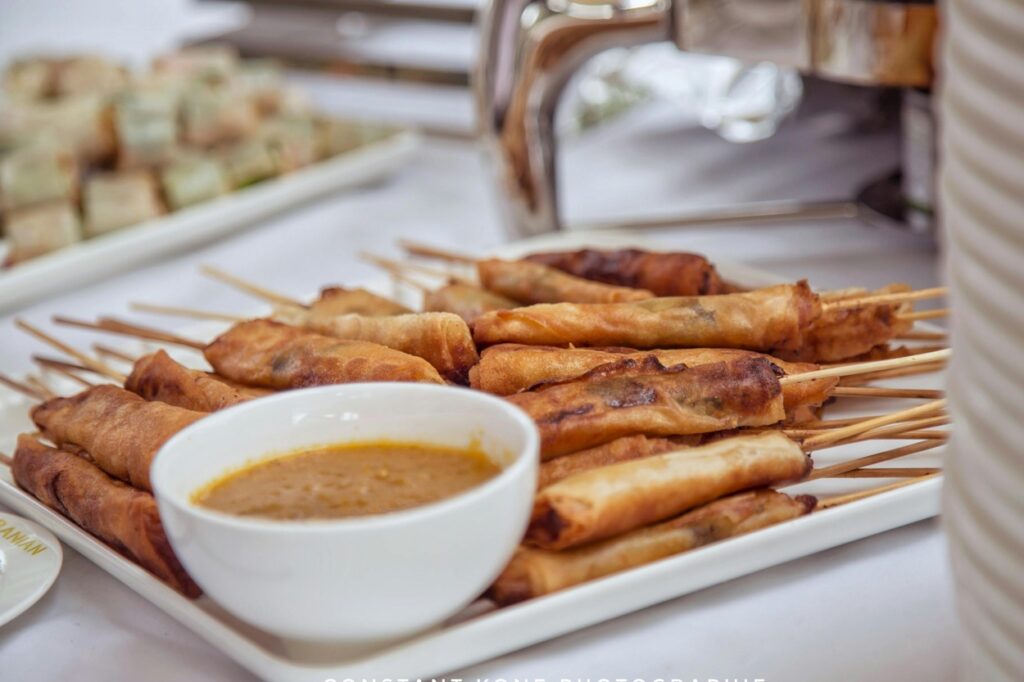
13. Sisig: A Sizzling Pork Delight
Sisig is a savory and sizzling dish made from parts of the pig’s head and liver. The meat is seasoned with calamansi, soy sauce, and various spices, then grilled or pan-fried until crispy. Served on a hotplate, Sisig is often garnished with chopped onions, green chili peppers, and a raw egg for added richness.
14. Pinakbet: A Flavorful Vegetable Medley
Hailing from the Ilocos region, Pinakbet is a savory vegetable dish made with a variety of native vegetables like eggplant, okra, squash, and bitter melon. The vegetables are stewed in shrimp paste, garlic, and ginger, creating a rich and flavorful medley that perfectly complements rice.
15. Taho: Sweet Soy Delight
Taho is a popular street food and breakfast item in the Philippines. This sweet concoction consists of silken tofu, sago pearls (similar to tapioca pearls), and a sweet arnibal syrup made from caramelized brown sugar. Topped with arnibal and sometimes arnibal-infused sago pearls, Taho is a comforting and sweet way to start the day.
16. Inasal: Grilled Chicken Goodness
Originating from the Visayan region, Inasal is a flavorful grilled chicken dish marinated in a mixture of calamansi, soy sauce, garlic, ginger, and achuete (annatto) oil. The result is a beautifully charred and aromatic chicken, often served with a side of sinamak (spiced vinegar) for dipping.
17. Kamayan: A Feast for the Hands
Kamayan is not a specific dish but a dining style that involves eating with your hands. Often associated with boodle fights, Kamayan showcases a communal way of enjoying Filipino cuisine. A table is covered with banana leaves, and a feast of various dishes like grilled seafood, meats, vegetables, and rice is laid out for everyone to enjoy with their hands.
18. Ginataang Halo-Halo: Sweet Coconut Medley
Ginataang Halo-Halo is a sweet and creamy dessert made with a mix of root crops, fruits, and jellies cooked in coconut milk. The result is a delightful medley of textures and flavors, with the sweet coconut milk adding a rich and comforting touch to this dessert.
19. Dinakdakan: An Ilocano Delicacy
Dinakdakan is a regional dish from the Ilocos region made with grilled pork parts such as ears, snout, and tongue. These meats are diced and mixed with onions, chili peppers, calamansi, and mayonnaise, creating a flavorful and slightly spicy delicacy that highlights the bold flavors of Ilocano cuisine.
20. Binignit: A Sweet Stew for the Soul
Binignit is a sweet and hearty stew made with glutinous rice balls, various root crops, and fruits cooked in coconut milk. This warm and comforting dessert is often enjoyed during Lenten season and other special occasions, offering a delightful blend of textures and natural sweetness.
Incorporating these additional Filipino dishes into your culinary repertoire will undoubtedly elevate your appreciation for the rich and diverse flavors that make Filipino cuisine a true delight. From the savory delights of Sisig to the comforting sweetness of Taho, each dish tells a unique story of tradition, culture, and the love Filipinos have for good food.
Sweet Endings:
1. Halo-Halo: A Cool and Colorful Treat
Halo-Halo, which means “mix-mix” in Filipino, is a delightful dessert that combines shaved ice with a variety of ingredients. From sweet beans, jellies, and fruits to leche flan and ube (purple yam) ice cream, Halo-Halo is a refreshing and satisfying way to beat the tropical heat.
2. Leche Flan: A Creamy Caramel Custard
Leche Flan is a Filipino-style caramel custard made with eggs and condensed milk. Its velvety texture and sweet caramel syrup make it a beloved dessert often served during special occasions and celebrations.
3. Puto: Steamed Rice Cakes
Puto, a type of steamed rice cake, comes in various flavors and colors. Traditionally served as a snack or breakfast item, these soft and fluffy cakes are often enjoyed with butter, cheese, or grated coconut.
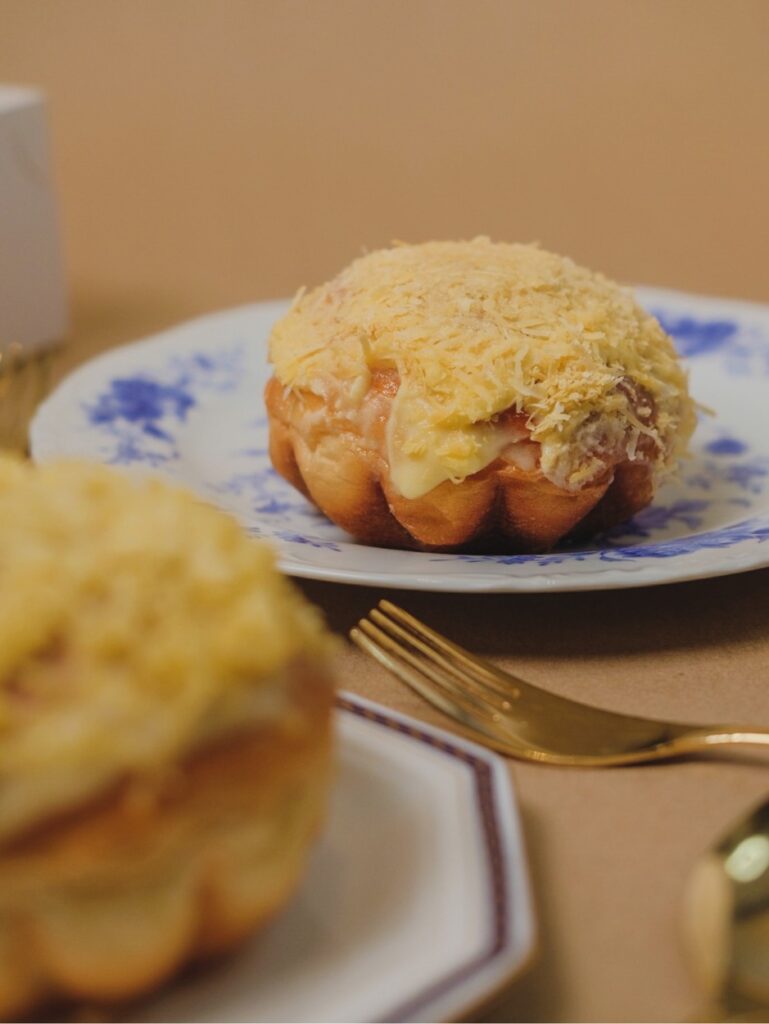
4. Ube Cake: A Purple Yam Delight
Ube, or purple yam, is a popular ingredient in Filipino desserts. Ube cake, with its vibrant purple hue, is a sweet and moist delight that showcases the unique flavor of this tuber. Topped with creamy icing or grated cheese, it’s a dessert that captures the essence of Filipino sweetness.

5. Bibingka: Rice Cake Extravaganza
Bibingka is a rice cake often enjoyed during the Christmas season. Made with rice flour and coconut milk, it has a slightly chewy texture and is topped with salted duck eggs, grated coconut, and sometimes cheese. This festive treat is a true celebration of Filipino flavors.
In conclusion, Filipino cuisine is a delightful journey filled with savory delights and sweet endings. From the iconic Adobo to the unique flavors of Balut, and the sweet pleasures of Halo-Halo and Ube Cake, exploring Filipino dishes offers a culinary adventure that reflects the country’s rich history and diverse cultural influences. So, the next time you find yourself craving a unique and flavorful experience, dive into the world of Filipino cuisine and let your taste buds savor the richness of the Philippines.
Follow us on Facebook!

